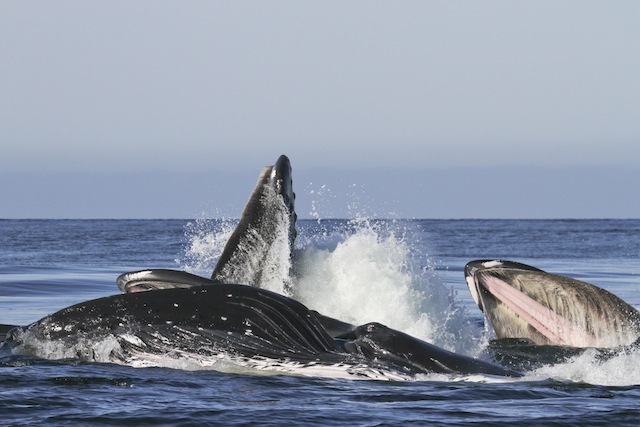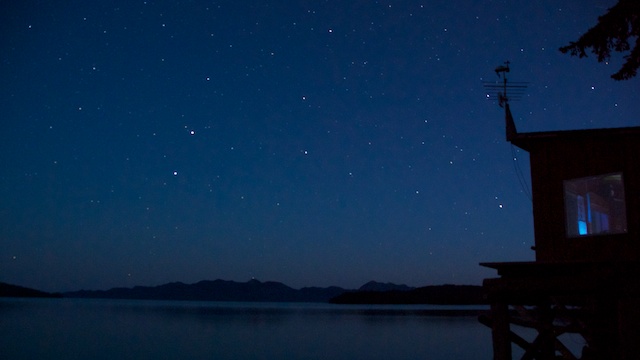It is 5am and the day is starting early with humpback feeding calls echoing through the lab from the Squally Channel hydrophone station. The length of each call session suggests this may be a large group of humpback whales bubble met feeding together. We quickly pack up the boat with our recording gear and cameras and head out on the water. It is still early in the season for such humpback activity, but in so many ways this year has been so unpredictable anything is possible. After a 30 minute boat ride we could see at least 5 of heart shaped blows in the distance. I slowed the boat down as I was not sure which direction the whales were traveling in. This turned out to be a grand decision. We had just positioned ourselves, with the boat turned off, when we could hear feeding calls vibrate right through the hull of the boat; they had to be very close! Sure enough moments later the water began to bubble 100 meters from the boat, herring were jumping for their lives followed by an explosion of massive humpback mouths gaped wide open filling with fresh fish.
A number of tonal blows, grunts and squeals filled the air as one by one each whale re-positioned themselves in a circle and began a new sequence of coordinated dives. With the last whale to dive I tossed the hydrophone into the water and began to record their haunting and extremely effective feeding calls. The whales below began their spiral dance, blowing bubbles in a circular motion, forming a net that would force a school of herring to the surface. The feeding calls would further frighten the fish into an even tighter ball making the feeding frenzy that would occur on the surface that much more successful.
This event repeated itself for hours. We were able to take a photograph of each dive sequence as well fabulous identification pictures of each whale. Another whale joined this group and I screamed with delight when I realized who this whale was. Her name is Velvet as her fluke is completely black. She was one of the last humpback whales I had seen in October last year before the migration south. That late fall day in 2011 was also the day I realized that Velvet was a female as she brought her young, healthy calf right to side of the boat. Now she is back, this time without a calf, but she may well be pregnant again. If so, she will need every bit of nutrition these waters may supply to regenerate her fat cells and storage of energy. We were captivated for over 6 hours with this group of humpback whales but the weather was changing and I knew Hermann would need the boat to check out one of the hydrophone stations later today.
Once we were settled back in the lab I checked my email. Colleges’ of ours had sent an email with a picture that I just cannot get out of my mind; one that haunts me now as I write this blog. They had taken the time to produce to scale what a VLCC oil tanker would look like traveling through Squally Channel, part of the proposed tanker route for the Enbridge Project. This is the exact location we had just spent hours watching these magestic whales feed nonstop for hours. It is shocking to say the least that anyone could even consider this route for such a massive tanker. They are as long as 3 ½ football field (350 meters) and could carry up to 2 million barrels of crude oil; the destruction from a spill of this magnitude would leave this pristine, diverse habitat completely lifeless.You can see on this chart a few extremely tight turns this tanker would need to make, in particular that between Gil Island and Fin Island. The slightest mistake would lead to a catastrophic event destroying one the last intact ecosystems with in British Columbia.
We hope that you will stand with us and agree that oil tankers do not belong in this marine masterpiece. Now we say good night as another day in this remote place of pure wonder becomes night. With any luck we will be listening to blows in the bay beneath this star filled sky.



